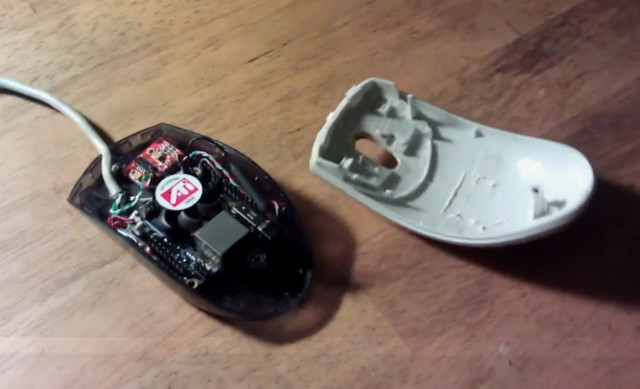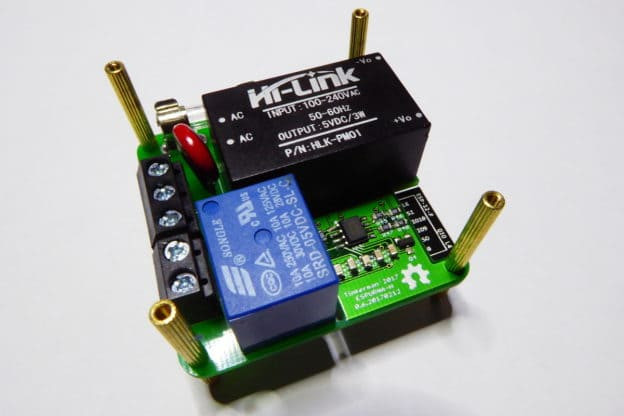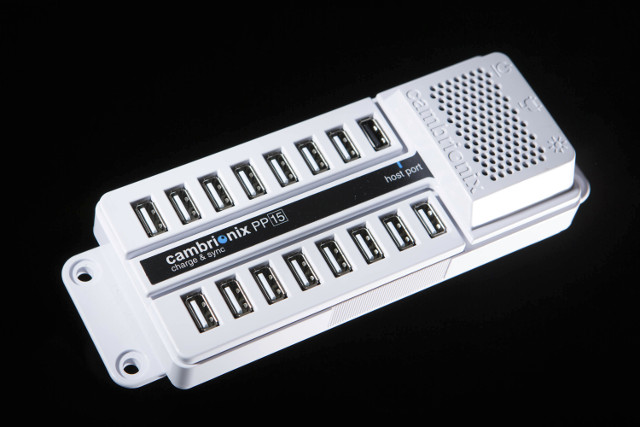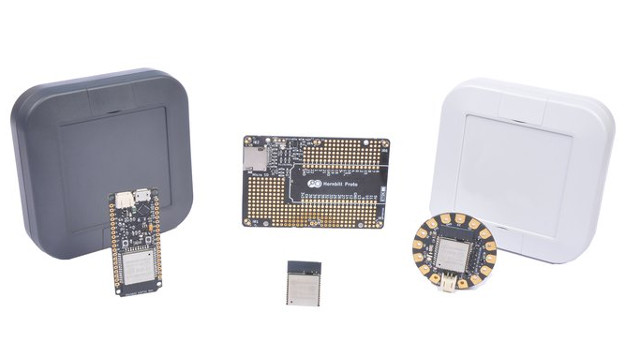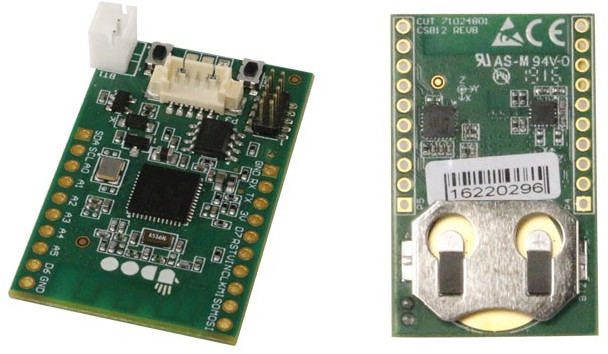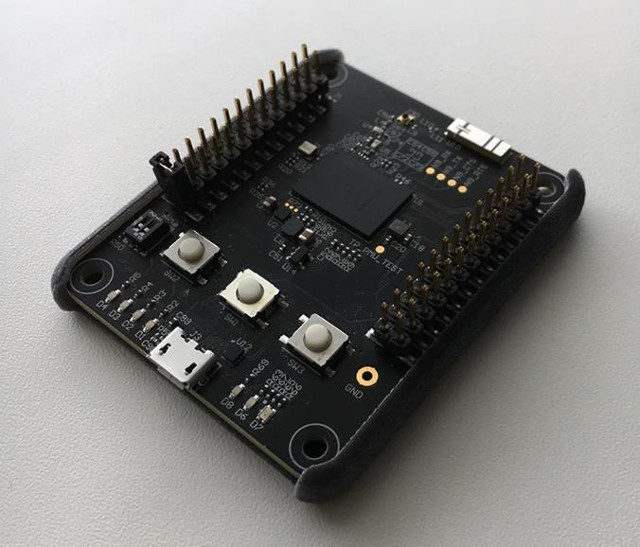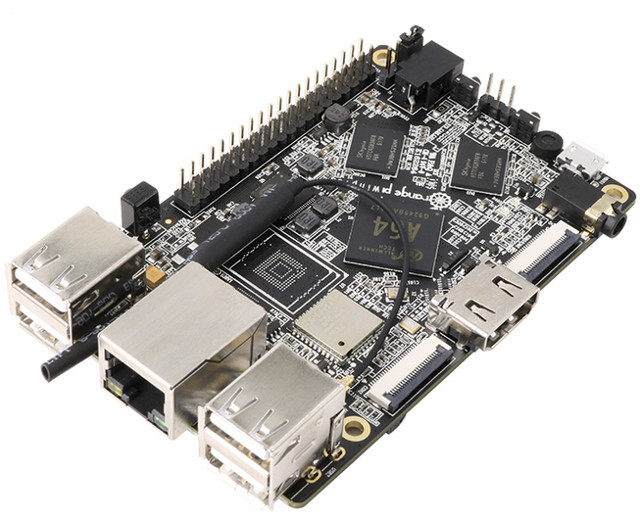MYIR Tech has released MYS-6ULX single board computer based on NXP i.MX 6ULL/6UL Cortex-A7 processor designed for either Industry 4.0 with MYS-6ULX-IND model, or the Internet of Things for MYS-6ULX-IOT. Both boards include 256MB DDR3 SDRAM, 256MB NAND flash, USB, USB, Ethernet, LCD interfaces and more, in a compact 70 x 55mm form factor. Both boards have very similar specifications. Features MYS-6ULX-IND MYS-6ULX-IOT SoC NXP i.MX 6UltraLite (MCIMX6G2CVM05AA) with an ARM Cortex A7 processor @ up to 696 MHz and 2D graphics accelerator NXP i.MX 6ULL (MCIMX6Y2DVM05AA) with an ARM Cortex A7 processor @ 528 MHz and 2D graphics accelerator DDR3 256MB (support up to 2GB) NAND Flash 256MB (support 512MB/1GB) eMMC DNP (Do Not Populate – Reserved design for optional 4GB flash) Ethernet 10/100Mbps USB 1x USB Host, 1x micro USB OTG Micro SD Card 1x Micro SD card slot Buttons 1x Reset Button, 1x User Button LED 1x Power Indicator, 2x […]
No Case for Orange Pi Zero or Other Tiny Development Boards? No problem: Use an Old Mouse
There now plenty of tiny ARM Linux boards, which are normally sold without case, but usually it’s not to hard to find a 3D printed case. But if you have small board, and don’t feel to purchase a case for it, there’s an other solution: use an old mouse. That’s exactly what Slider2732 has done with his Orange Pi Zero board to convert it to a mini PC running Armbian, or a game console running RetroOrangePi. So after the keyboard PC, here comes the mouse PC! So what did he exactly use for the mouse PC? Orange Pi Zero board An old Logitech mouse for the case and cable An 8GB micro SD card to flash the operating system A 4.3″ car reversing monitor (optional) acting as the display with composite input An Rii wireless keyboard/mouse, as the mouse function is not included with the mouse PC… A PAM8403 based […]
ESPurna-H is a Compact Open Source Hardware Board with ESP8266 WiSoC, a 10A Relay, HLW8012 Power Monitoring Chip
ESPurna is an open source firmware for ESP8266 based wireless switch as such Sonoff POW, which I’ve been personally using to monitor my office’s power consumption. The developer, Xose Pérez (aka tinkerman), has now developed his own hardware with ESPurna-H board, as existing wireless switches with power monitoring functions would not fit into a gang box. ESPurna-H board specifications: WiFi Module – ESP12 with Espressif ESP8266 WiSoC Relay – Songle SRD-05VDC-SL-C 10A relay with NO and NC connection Power Monitoring – HLW8012 chip as found in Sonoff POW Expansion – 2x 5-pin header with the programming GPIOs, and two connections for external button and LEDs Misc – Reset button Power Supply Input – 100 ~ 240V AC Output – 5V up to 600 mA via Hi-Link HLK-PM01 Safety – Optical isolation between the logic circuit and the relay circuit Dimensions – 50x50x20mm Xose designed the board with Eagle 8.0 and released […]
Cambrionix PowerPad 15S is a 15-Port USB Hub with 2.1A Output, Control API, Serial Console, Power Consumption Monitoring
Many development boards are powered over USB, usually via a micro USB ports, and if you have one board, you’d just use a 5V USB adapter with the right amperage, and it will work fine as long as you have a low resistance USB cable (AWG20 cables recommended for higher loads). But when you start to running multiple boards using power strips with USB adapter start to take space, so USB hubs are much more convenient. However, you need to find one that delivers enough power, is reliable, and possible allows per port power control. The guys at LAVA (Linaro Automated Validation Architecture) are using a lot of boards to validate software developed by Linaro and their members, with the boards having to run 24/7, and they had various misfortunes with USB hubs, but as Dave Pigott reports they’ve now found that USB hub of their dream with a 15-port […]
Hornbill ESP32 Development Boards Come with an Optional IP67 Rated Enclosure (Crowdfunding)
While there are plenty of ESP32 development boards, and prices have recently plummeted, getting a case for your project can still be a problem especially if you plan to use it outdoor, as you need to protect your hardware from rain and dust. Hornbill project offers two ESP-WROOM-32 based boards, a prototype board, and an IP67 certified case that could be useful for outdoor use. Hornbill ESP32 Development Boards Let’s start by checking the boards available starting with ” Hornbill ESP32 Dev” board with the following specs: ESP-WROOM-32 module with WiFi, Bluetooth LE, FCC, CE, IC, MIC (Telec), KCC, and NCC certifications I/O headers 2x 19-pin headers with GPIOs, I2C, UART, SPI, ADC, DAC, touch interface, VN/VP, 5V, 3.3V and GND Breadboard-friendly Debug – Built-in CP21XX USB-to-serial Power Supply – 5V via micro USB port, battery header + single cell LiPo charger Dimensions – TBD ESP32 Minima is also based […]
UDOO BLU and BLU SENSE IoT Modules Integrate Bluetooth LE, Zigbee, and 6LOWPAN Connectivity
UDOO is known for their Linux boards based on NXP and Intel processors for makers and the education market such as UDOO NEO or UDOO x86, but the company has now developed UDOO BLU and BLU SENSE battery powered modules based on Texas Instruments CC2650 ARM Cortex M3 microcontroller, both with Bluetooth LE, Zigbee, and 6LOWPAN connectivity, and the SENSE model adds some extra sensors. UDOO BLU and BLU SENSE specifications: Wireless MCU – Texas Instruments CC2650 ARM Cortex M3 MCU @ 48 MHz with 128KB flash, 8KB SRAM with 2.4 GHz radio Connectivity – Bluetooth Low Energy (BLE), ZigBee, 6LoWPAN Sensors (BLU SENSE only) – NXP FX0S8700CQ accelerometer & magnetometer sensor, NXP FXAS21002C gyroscope & temperature sensor Expansion 1x 5-pin sensors Snap-In I2C connector for UDOO Bricks 2x 10-pin headers with 8x Digital GPIOs, 6x ADCs, 1x I2C, 1x SPI, 1x UART Misc – 3x User Configurable LEDs (Red, […]
Microsoft is Working with Mediatek on Project Sopris Secure WiFi MCU
There are serious security issues with the Internet of Things at all levels: hardware, software, network, and end-users. Microsoft Research NExT Operating Systems Technologies Group has been tasked with “exploring the goal of securing the vast number of low cost Internet connected devices coming online” with Project Sopris. They have shared their first technical report that identifies “seven properties of highly secure devices”, and describes their experiments towards designing microcontroller based prototype devices adapted from Mediatek MT7687 MIPS microcontroller, and exhibiting those seven properties. The seven properties identifies by Microsoft team include: Hardware-based Root of Trust – Unforgeable cryptographic keys generated and protected by hardware. Physical countermeasures resist side-channel attacks. Small Trusted Computing Base – Private keys stored in a hardware-protected vault, inaccessible to software. Division of software into self-protecting layers. Defense in Depth – Multiple mitigations applied against each threat. Countermeasures mitigate the consequences of a successful attack on […]
Shenzhen Xunlong Releases Two Orange Pi Boards with 64-Bit ARM Processor, 2GB RAM
Shenzhen Xunlong has already been selling 64-bit ARM development board with their Orange Pi PC 2 & Orange Pi Zero Plus 2 H5 boards based on Allwinner H5, as well as Orange Pi Win board powered by Allwinner A64 processor. However, so far none of them are equipped with much memory, with the only options being 512MB or 1GB RAM. The company has recently launched two new boards with 2GB RAM, namely Orange Pi Win Plus featuring Allwinner A64 SoC, and Orange Pi Prime equipped with Allwinner H5 SoC. Orange Pi Win Plus That board is just an update to Orange Pi Win board with the only difference I could find being the 2GB RAM: SoC – Allwinner A64 quad core ARM Cortex A53 processor @ 1.2 GHz with Mali-400MP2 GPU System Memory – 2GB DDR3 Storage – 2MB SPI flash, micro SD slot up to 64GB, footprint for optional […]



